它巨大的正门看起来就缺一幅毛泽东的像了——除了这座大门是以明朝的样子建造,而不是自17世纪以来被称为天安门的后期版本。
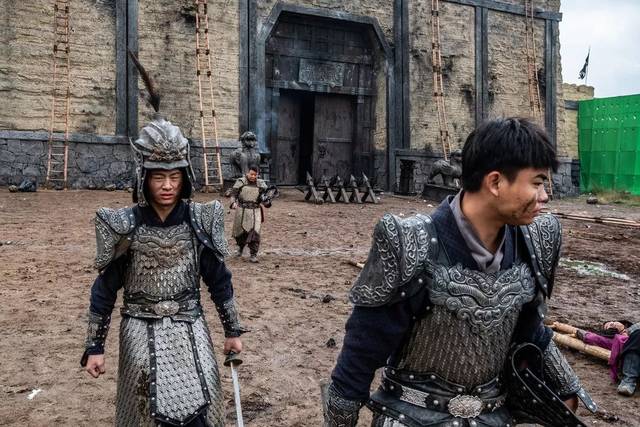
Yu Zheng, a screenwriter and producer of “Yanxi Palace,” said he wanted to convey an aspect of China’s “intangible cultural heritage” — combined with “the pacing of an American television series.”
所以,为了重现那个时代的服装和绒花头饰,制作公司把他们的预算花在了刺绣手艺人身上,手工缝制了3000套服装,其中一些目前陈列在公司位于北京的办公室里。
“Yanxi Palace” streamed on iQiyi, China’s version of Netflix, from July to August, and continues to do so in China and dozens of other countries. It has been streamed 20 billion times, and its staggering popularity has influenced everything from fashion to the debate over China’s struggling #MeToo campaign.
电影制作模糊了现实和幻想的界限,在这一点上,横店影视城可以说比地球上其他地方做得更好。
There are 400 distinct spaces where filming can take place, covering the entire breadth of China’s history, its culture and its architecture.
The studio was founded in 1996 by one of China’s first billionaires, Xu Wenrong. His Hengdian Group made a fortune in electronic components in the early years of the country’s capitalist transition.
“Many people learn history through television dramas,” said Zheng Junnan, a production assistant for another concubine melodrama set in the Qing dynasty.
有两个地方重现了19世纪风貌的广州和香港,那是为拍《鸦片战争》修建的;另一个地方再现了圆明园,圆明园在1860年被英法联军洗劫。北京仍保存着圆明园的遗址。
从网上的评论来看,这部剧的主创人员和粉丝认为,它的成功在很大程度上是因为对历史细节的关注。
“The details of this show are very good,” she explained. “Many details, like the clothes, the headdresses and the backdrops, are in line with history.”
这里还有对共产党战时根据地延安的复原,以及一座佛寺的复制品。该寺庙的原型位于附近的一座山上,已经不对公众开放。
“很多人通过电视剧学习历史,”郑俊男(音)说,变态网页游戏私服,他是另一部以清朝为背景的后宫戏的制片助理。
在横店市中心有一个类似工会大厅的地方,等待临演机会的人在这里打牌、打台球。壮丽的战争场面需要大量的临时演员。
“她从那里跳下来,”她继续描述发生在18世纪中国的一个史实——富察皇后之死——同时也是今年最轰动的70集长篇剧集《延禧攻略》中的一个关键场景。
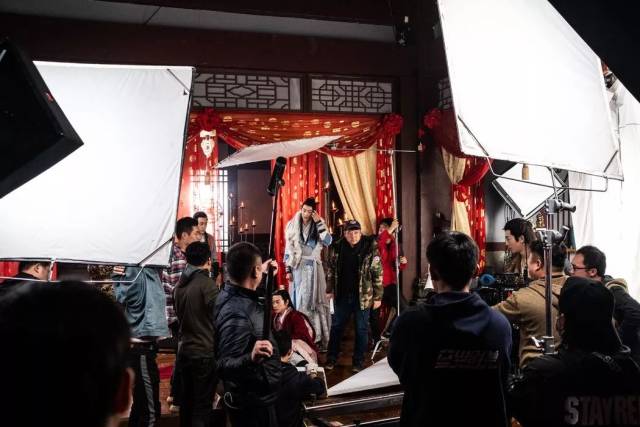
The one thing that might seem to be missing from its huge front gate is the photograph of Mao Zedong — except that the gate was constructed to look as it did during the Ming dynasty, not the later version known since the 17th century as Tiananmen.
Yuxuan Honghao, a 26-year-old actor on the set of another series about concubines set in the Qing dynasty, said the attention to historic details had not always been a priority in the past but “The Story of Yanxi Palace” is already encouraging others to follow.
Since then more than 2,400 films and television series have been made at the studio, including 337 between January and October this year.
《延禧攻略》的编剧兼制片人于正说,他想传达中国“非物质文化遗产”的一个方面,并将其与“美剧的节奏”结合起来。
和横店的许多人一样,郑先生也不长住在这里;他只是拍摄期间才住在横店。
“男女演员的成本并不高,”《延禧攻略》的出品方、北京欢娱影视的首席执行官杨乐说。
徐文荣本人收藏的艺术品——花瓶、雕塑、宝石等——陈列在博览城120座建筑中的几座里,其中包括对南京秦淮河的再现。
It wasn’t his first choice, he said, but other sets in the studio were already booked, so he made do, decorating the stage in the style of the 20th century, and bringing in opera singers from Beijing.
“People in our generation are all watching American and British television series,” said Mr. Yu, who is 40, “but actually there are many traditional cultures in China that are very worthy of being promoted to the world. We have a lot of beautiful things.”
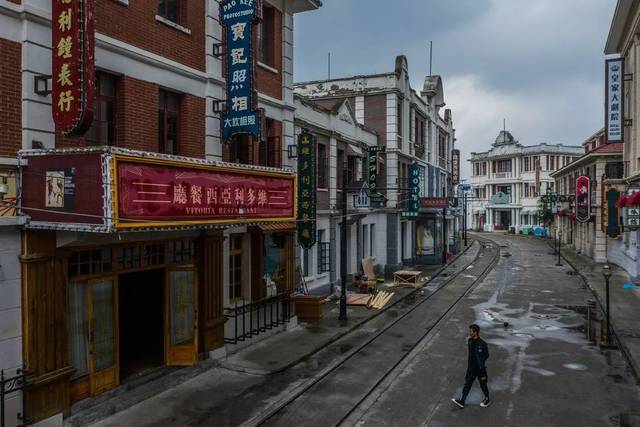
When an acquaintance needed a location for a film, “The Opium War,” about China’s humiliating loss to Britain in the 19th century, Mr. Xu agreed to build one from scratch in the company’s hometown.
“The cost of actors and actresses are not expensive,” said Yang Le, the chief executive officer of Huanyu Film, the Beijing production company that produced “Yanxi Palace.”
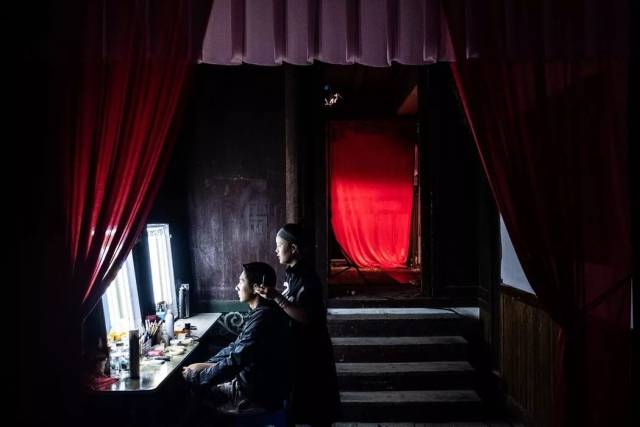
It has also attracted more visitors to Hengdian, which distributes maps and postcards showing the sites where the series was filmed, including the building of the title, which means the Palace of Prolonged Happiness.
There are scores of courtyard temples, houses and other structures, including a wooden tower from Nanjing. Each is marked with plaques describing their origins and “date of migration.”
▲横店重现了19世纪末20世纪初广州和香港的街头风貌。 LAM YIK FEI FOR THE NEW YORK TIMES
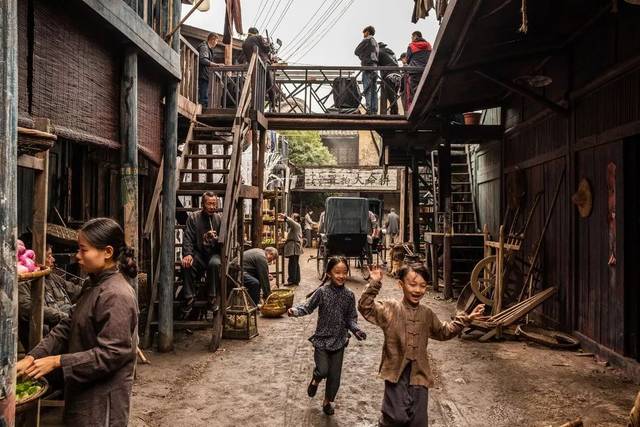
当一位熟人为拍摄影片《鸦片战争》需要一个场地时,徐文荣同意在公司的老家从零开始建了一个。《鸦片战争》讲述的是19世纪中国被英国打败的耻辱故事。
徐文荣在1996年创立了横店影视城,他是中国首批亿万富翁之一。 LAM YIK FEI FOR THE NEW YORK TIMES
On a recent visit, there were 15 projects being shot at the same time, requiring studio organizers to juggle schedules and enforce deadlines.
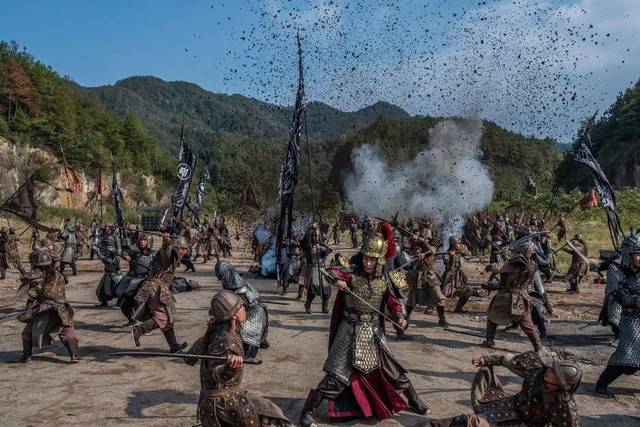
To call it a “lot” is an understatement. It is not one lot, but 13 of them, scattered over 2,500 acres in and around what was once a sleepy farming village nestled in the hills of Zhejiang Province, in central China.
从7月到8月,电视剧《延禧攻略》在中国版的Netflix爱奇艺上播出,并且在中国和其他几十个国家仍在播出。它的播放次数超过200亿次,其惊人的受欢迎程度影响了方方面面,从时尚到围绕中国正在苦苦挣扎的“我也是”运动的争论。
▲《最后的镖师》拍摄现场。横店有13个片厂,分散在10平方公里的范围内。 LAM YIK FEI FOR THE NEW YORK TIMES
那里还有一座紫禁城,不仅逼真程度令人惊讶,而且只比北京的真实版本小一点。
The serial’s creators, and its fans, judging from comments posted online, credit its success in large part to the attention to historical detail.
Ye Yunfeng, 24, came with her boyfriend from Lishui, a city not far to the south, because she wanted to see the hall where the emperor’s Grand Council met.
There is a sort of union hall in the town center where people play cards and shoot pool while waiting for the chance to get parts as extras. And epic battles need lots of extras.
That is where the concubines of the Qing dynasty emperors lived and conspired until the place burned down in the middle of the 19th century. The one in the Forbidden City today is a reconstruction from 1931.
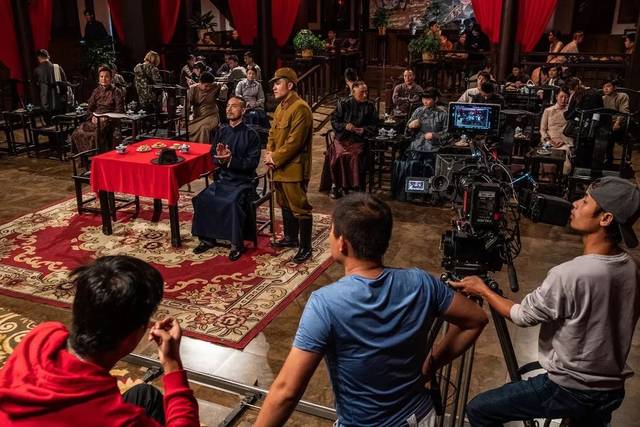
把它称之为一个“片厂”是保守的说法。它并不是一个,而是由分散在10平方公里土地上的13个片厂组成,这里曾经是一座死气沉沉的村子,掩映在中国东部浙江省的丘陵间。
中国还有其他影视城——比如上海影视乐园。但只有在横店,你才能找到秦王宫或是北宋都城的忠实再现。秦始皇于公元前3世纪在今西安附近行大一统,而北宋的统治时期则从10世纪至12世纪。
▲《长安诺》的战争戏。 LAM YIK FEI FOR THE NEW YORK TIMES
“我们这代人都在看美剧英剧,”40岁的于正说,“但实际上,中国有许多传统文化非常值得向世界推广。我们有很多美的东西。”
There are other studios in China — Shanghai Film Park, for example. Only in Hengdian, though, will you find a faithful recreation of the palace of Qin Shi Huang, who ruled in the third century B.C. near what is today known as Xian, or of the capital of the Northern Song dynasty, which reigned from the 10th to the 12th centuries.
另一处片厂是“明清民居博览城”,横店附近地区拆掉的中国古建筑被运到这里重建。
Mr. Zheng, like many in Hengdian, is a transient; he moved to Hengdian for the duration of shooting.
它还吸引了越来越多的游客造访横店,这里有人分发地图和明信片,展示该电视剧的拍摄地点,包括剧名中的宫殿,意思是持久幸福的宫殿。
中国横店——如果今天你要在中国拍一部有关古代武士捍卫某个虚构王国的电影,或是上世纪30年代的游击队抗日电影,又或者中国娱乐产业的主要产品——宫斗戏的各种变化之作,很有可能你得来横店。
“These scenes today no longer exist,” said Guo Huizhong, a director, as he filmed a war drama, whose title roughly translates as “The Last Bodyguard,” inside a building reconstructed as an opera house from the first half of the 20th century.
郭会中拍摄《最后的镖师》的剧场,是安徽一座18世纪建筑的重建,带有该地区独特的南方建筑风格。
“She jumped from there,” she went on, describing a historical fact of 18th-century China — the death of Empress Fucha — but also a pivotal scene in one of the most sensational dramas of the year, a 70-episode epic, “The Story of Yanxi Palace.”
24岁的叶云凤(音)和她的男朋友从南部不远的城市丽水来到横店,因为她想看看皇帝的军机处议事的地方。
▲电视剧《长安诺》的拍摄现场。它讲述了一名少女成长为太皇太后的故事。 LAM YIK FEI FOR THE NEW YORK TIMES
▲一部清宫戏的导演正在看监视器。 LAM YIK FEI FOR THE NEW YORK TIMES
▲一部背景设置为旧上海的戏。 LAM YIK FEI FOR THE NEW YORK TIMES
There is even a Forbidden City that is not only startlingly realistic, but also only a little bit smaller than the real thing in Beijing.
这个城市是横店影视城的所在地,号称世界上最大的户外影视基地。
记者最近一次来这里时,有15部戏正在同时拍摄,这就要求影视城的组织者应付多个时间表,严格执行截止日期。
Two areas recreate Guangzhou and Hong Kong as they looked in the 19th century, built for “The Opium War,” and another reproduces the Imperial Summer Palace, which was sacked by British and French soldiers in 1860. Its ruins are preserved in Beijing.
There is also a recreation of the Communist Party’s wartime base in Yan’an and a replica of a Buddhist temple whose original on a hill nearby has since been closed to the public.
“这些场景今天已经没有了,”导演郭会中说,他正在一座20世纪上半叶歌剧院模样的建筑里拍摄一部战争片,片名翻译成英语大致是《最后的镖师》。
“This is where the empress committed suicide,” a studio assistant, Xu Hailei, explained as she guided an open cart through the faux Forbidden City, which, even up close, is pretty convincing.
“历史书上的东西是一方面的;它们只是文字的,”他说。“电影和电视剧可以尽可能地还原中国历史,人们可以看到过去是什么样的。”

